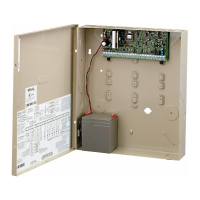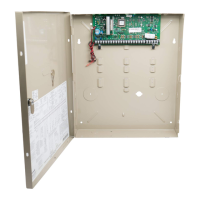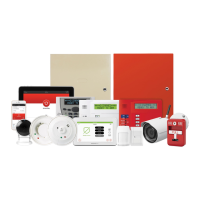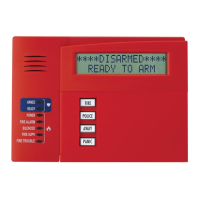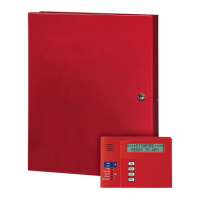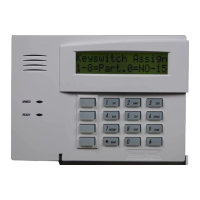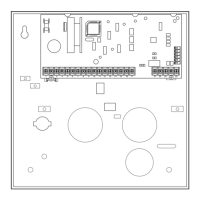Why is my Honeywell VISTA-15P panel not sending signals immediately or not at all?
- Jjacob51Sep 14, 2025
If your Honeywell Security System panel is not sending signals immediately or not at all, check the *50 Dialer Delay setting.




Why is my Honeywell VISTA-15P panel not sending signals immediately or not at all?
If your Honeywell Security System panel is not sending signals immediately or not at all, check the *50 Dialer Delay setting.
What to do if my Honeywell VISTA-15P Security System keypads work fine when disarmed, but stop working when in alarm?
If your Honeywell Security System keypads function normally when disarmed but cease to work during an alarm, it could be due to excessive power draw from the panel's Auxiliary Power or the Bell Output. Ensure that the Auxiliary Power usage does not exceed 600mA and the Bell Output does not exceed 2 Amps. Another potential cause is a faulty or weak battery. Try disconnecting the battery to see if this resolves the problem.
How to fix a Honeywell Security System keypad that is locking up after 3-4 button presses?
If your Honeywell Security System keypad locks up after a few button presses, ensure that the keypad's address is unique and doesn't match any other keypad on the system, as address conflicts can cause lockups. Also, a shorted green wire can prevent commands from reaching the panel. If multiple devices are on the ECP, connect them one at a time to isolate the problematic wire run.
What does 'Lo Bat' mean on my Honeywell VISTA-15P?
If your Honeywell Security System displays 'Lo Bat' without a zone number, it indicates that the system battery is either low or disconnected.
Why is the central station receiving 'Troubles' instead of alarms from my Honeywell Security System?
If the central station is receiving 'Troubles' instead of alarms from your Honeywell Security System, check to see if the central station is receiving an E374.
Why am I getting a long beep when adding user codes to my Honeywell VISTA-15P Security System?
If you receive a long beep when adding user codes to your Honeywell Security System, it means the panel is preventing you from duplicating user codes.
What causes Honeywell VISTA-15P zone doubled zones to be in 'Check'?
If zone doubled zones are in 'Check' on your Honeywell Security System, it indicates a short on one of the zone circuits; if one is shorted, both are shorted. Check the wiring. Also, use only Normally Closed contacts for doubled zones. A Normally Open device will short both zones when activated.
What to do if my Honeywell VISTA-15P Security System wireless zone is in 'Check'?
If a wireless zone on your Honeywell Security System is in 'Check', it could be due to a 'trouble' Zone Type, a tamper, or a missing check-in signal. If it's a missing check-in (indicated by E381), relocate the transmitter and/or receiver, or add a 5800RP to extend the range. If it's a tamper condition (E383), restore the cover or wall tamper of the transmitter and disarm the keypad twice.
Why are the Goto and Global Arm/Disarm commands not working on my Honeywell VISTA-15P Security System?
If the Goto and Global Arm/Disarm commands are not working on your Honeywell Security System, ensure that the user code is programmed into both partitions before attempting to execute these commands.
Why is my Honeywell VISTA-15P keypad not providing exit beeps when arming Away or Max?
If your Honeywell Security System keypad isn't providing exit beeps when arming in Away or Max mode, ensure that *37 'Audible Exit Warning' is enabled for exit beeps on all keypads. Also, keypad sounds may be suppressed in the second digit of the keypad addressing fields *190 - *196. This can suppress Chime, Entry/Exit, and Arm/Disarm beeps from specific keypads.
| Control Panel Type | Hardwired |
|---|---|
| Zones | 8 |
| Partitions | 1 |
| User Codes | 48 |
| Keypads | Up to 8 |
| Event History | 100 events |
| Event Log | 100 events |
| Communication | Phone line, Cellular |
| Wireless Compatibility | Honeywell 5800 series wireless devices |
| Battery Backup | 7Ah |
| Outputs | 2 |
Provides a general overview of the Honeywell security system's capabilities.
Covers core functionalities like burglary, fire protection, and security codes.
Details how to arm, step-arm, and disarm the system.
Explains remote system control via telephone.
Describes Alpha and Fixed-Word keypads and their features.
Details the purpose and operation of specific keypad keys.
Explains LED indicators and message displays on keypads.
Manages time for arming/disarming and alarm avoidance.
Verifies all zones are closed or bypassed.
Explains STAY, AWAY, INSTANT, and MAXIMUM arming options.
Procedures for disarming and clearing alarm states.
How to exclude specific zones from arming.
Using chime alerts for door/window openings.
Activating emergency responses via designated keys.
Creating and using macros for automated sequences.
Configuring automatic and manual pager notifications.
Managing user access and permissions.
Managing and arming multiple system partitions.
Automating system actions based on time.
Recording, viewing, and understanding system events.
Performing weekly checks for proper operation.
Identifying and resolving system issues and faults.
Routine care, cleaning, and battery replacement.
Details residential fire detection and alarm functionality.
Procedures to manage fire alarm events.
Guidelines for fire escape routes and safety.
A summary of basic system operations.
Overview of system sounds and display messages.
Compliance information and safety precautions.
Potential failure points and operational constraints.
Details the product's warranty coverage.
